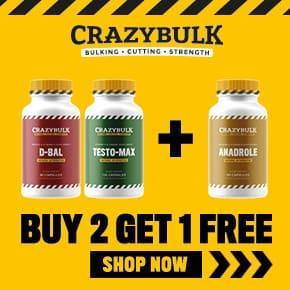You’re standing in front of the gym mirror after another intense workout and wondering if there’s a secret to breaking through your plateau. Maybe you’ve heard whispers about athletes using HGH and IGF-1 together for bodybuilding and seen the jaw-dropping transformations online. The idea of unlocking new muscle growth and faster recovery is tempting but it’s easy to wonder if these compounds are truly the game changers they seem to be. Before you immerse it’s important to understand how HGH and IGF-1 actually work together—and what that could mean for your fitness journey.
Understanding HGH and IGF-1
These two words—HGH and IGF-1—pop up a lot in muscle-building talks. You've probably heard stories about guys powering through plateaus and recovering faster. But what are these compounds, and why do some lifters chase them?
What Is HGH?
HGH means Human Growth Hormone. Your body makes HGH in your pituitary gland. People often call it the “growth hormone” because it's key for getting taller while you're young. HGH doesn’t stop helping after childhood. Adults use it for muscle repair, fat loss, and keeping skin firm. Some bodybuilders use HGH looking for bigger muscles and quick recovery. Have you ever seen before-and-after gym photos where change looks super fast? HGH is sometimes part of those stories.
What Is IGF-1?
IGF-1 stands for Insulin-like Growth Factor 1. Your liver makes IGF-1 when HGH tells it to. IGF-1 is the “worker” hormone, helping grow and repair muscle cells. Think of it like a project manager, telling muscles to use protein and grow faster. Many athletes talk about IGF-1 for increasing muscle volume and speeding up healing, especially after pushing heavy in the gym.
How They Work Individually
HGH by itself helps your body burn fat and heal tissue. People who use HGH often notice easier cutting and fewer aches after back-to-back gym days. IGF-1 works on building muscle fibers and helping them recover. Users often talk about getting stronger faster and bouncing back after big lifts. Both hormones help the body recover, just in different ways. If you've ever wondered why some people can lift, rest, and repeat with less downtime, these hormones are often part of their routine.
The Science Behind Combining HGH and IGF-1
Want to know how some lifters boost results and bounce back faster? Combining HGH and IGF-1 could change how you train and recover. Let’s look at what happens when you use them together and what that could mean for your gains.
Synergistic Effects on Muscle Growth
HGH works like a starter—it kicks off the changes your body needs to grow. When you use HGH, your liver makes more IGF-1. IGF-1 helps build and fix muscle after you train hard. If you push through tough sets, IGF-1 helps repair those tiny tears, making muscles bigger and stronger next time.
These two together create a team effect. HGH brings the spark for change, and IGF-1 keeps the muscle-building engine running. In some studies, athletes using both noticed more fat-free mass—think muscle weight, not just overall weight. You see this best when you mix the hormones with strength training or HIIT. People often say their recovery feels quicker—less soreness after heavy lifts.
Imagine someone adding HGH and IGF-1 into their routine while lifting five days a week. They describe harder muscles, a leaner look, and lifting heavier weights by the second month. Still, most muscle gains come from training and eating right, but taking both may push the process along.
Potential Benefits for Bodybuilders
Boosted protein power: Both HGH and IGF-1 help your muscles soak up more protein from food. This means after you eat and train, your muscles rebuild and grow faster.
Faster fat loss: HGH helps turn body fat into fuel. This gives you a leaner look and better muscle cuts.
Quicker recovery: IGF-1 is key for muscle repair. When you train hard—like after heavy squats—IGF-1 steps in to rebuild the muscle so you’re ready for the next round sooner.
More strength: Some lifters using both hormones say their deadlifts and bench presses go up in a few months.
Have you hit a wall with your progress? This combo could help, especially if you’re sticking to a tough program and want to get past a plateau.
Key takeaway: Used the right way, HGH and IGF-1 may work together to help you build muscles, burn fat, lift heavier, and recover faster. But, these results depend on hard training, smart eating, and healthy habits.
Risks and Side Effects of Using HGH and IGF-1 Together
Mixing HGH and IGF-1 for muscle-building can seem like a shortcut to big gains. But even advanced bodybuilders notice real risks. When chasing growth, you also face side effects that may hit soon or show up much later.
Short-Term Side Effects
You might see swelling in your hands or feet. Your joints can get sore or stiff, making gym sessions harder. Some folks feel sharp pain, like in carpal tunnel, so your grip can weaken. Male breast growth is a surprise for some, even with short use. Headaches and nausea sometimes pop up when you start stacking these hormones.
Example: Josh, a fitness coach, tried HGH and IGF-1 and felt his rings get tight within a week. He even had wrist aches so bad he had to skip deadlifts. When he lowered his dose, the swelling eased but the pain lingered for days.
Long-Term Health Risks
The biggest danger long-term is what you don’t see right away. High IGF-1 over months or years may raise your cancer risk, like prostate and others, because it tells your cells to keep growing. Your body can also fight against your own insulin, making blood sugar go up—this means you could run into insulin resistance and other blood sugar issues.
Unknown heart problems can build over time, since HGH uses push your organs and tissues to grow as well. Some lifters have noticed changes in facial features or larger hands—signs that mimic a condition called acromegaly. What’s worse, science hasn’t tracked all long-term users, so surprise risks are always possible after long abuse.
Example: One competitor used these stacks for years and suddenly needed medicine for high blood sugar. Another had his doctor flag a dangerous lump that needed testing—luckily it was benign, but it’s a warning.
Quick tip: Watch for swelling, soreness, and energy dips early. For long use, blood tests keep you safe. If something feels off, talk to your doctor—don’t just “push through.” Your health always matters more than a few extra pounds on the bar.
Legal and Ethical Considerations
You may hear a lot about HGH and IGF-1 for size and recovery, but there are real rules and risks around these hormones. These rules come from the law, sports groups, and doctors who want you to be safe. Let's explore the main things you should know before thinking about using these substances together.
Regulations in Bodybuilding
Most sports federations ban HGH and IGF-1. If you compete, using these could get you disqualified. The Industry Anti-Doping Agency puts both on its banned list for all major events. Even in some amateur events, these rules apply.
Getting HGH or IGF-1 without a prescription is illegal in most places. Laws mean doctors only prescribe these for real health issues, not just muscle growth. Buying them without a prescription can lead to legal trouble. Have you ever wondered why some big-name athletes lose their medals or get banned? Many times, it's for breaking these exact rules with banned substances.
Health Professional Perspectives
Doctors warn about HGH and IGF-1 side effects. Medical experts often share stories about people who tried these without medical help and faced big health problems. For example, some users develop high blood sugar or even signs that point toward diabetes.
High doses raise cancer and heart risk, according to major health studies. Those who use more than prescribed show more long-term health problems. Many doctors say they only give HGH or IGF-1 to people with real health problems, not for muscle gain alone.
Think about the last time you had a big health scare or saw a friend recover from bad choices. Would a boost in muscle be worth a lifetime of health risks? For most experts, the risks far outweigh the short-term rewards. It’s why they say these hormones belong in clinics, not gyms.
If you’re thinking about HGH or IGF-1, talk with a real medical expert first. The best gains come from safe choices, not shortcuts that can put everything you’ve built at risk.
Real-World Results and User Experiences
People want proof that HGH and IGF-1 can boost muscle and help recovery. You might wonder: Does this combo really make a difference where it counts—in the gym and mirror? Lots of bodybuilders say they've seen big changes when they use both together, even if not everyone talks about it openly.
Case Studies and Testimonials
Many lifters share stories of gaining size and recovering faster, especially when pushing hard with new training routines. Some recall gaining lean muscle across arms, chest, and legs in just a few months. Others point to lower body fat and feeling less sore after heavy workouts. One user says, “When I stacked HGH and IGF-1, my bench and deadlift went up, and I bounced back quicker after big sets.”
Bodybuilding forums carry many personal accounts of using HGH and IGF-1 together. People discuss hitting new strength goals and getting a “fuller,” more solid look. Others say their training changed when they added these hormones, with recovery between workouts getting much shorter. Remember, these results often come from dedicated athletes tracking food, sleep, and routines—not everyone sees the same changes.
Common Misconceptions
You might hear that everyone in bodybuilding needs HGH and IGF-1 to grow. That’s not true. Some people grow just as well or even better with smart eating, hard lifting, and good rest. The idea that “more IGF-1 is always better” also isn’t right. Very high IGF-1 has links to serious long-term health issues like higher cancer and death risk.
Another myth: Every user gets huge overnight. Real changes take time and plenty of effort. Some users say side effects, like swelling or sore joints, surprised them most. It’s easy to think these results happen without work, but most gains happen only with hard training, careful tracking, and patience. If you see big claims, always ask if you’re getting the full story.
Conclusion
Deciding whether to use HGH and IGF-1 together for bodybuilding is a major choice that goes beyond chasing rapid muscle gains. Your progress depends on your commitment to training nutrition and overall health—not just supplements or hormones.
If you’re considering these compounds make sure you understand the risks and legal issues. Always put your long-term well-being first and talk with a healthcare professional before making any changes. Your best results come from smart decisions and sustainable habits.
Meet BDPT Voices: Dr. Olivia Sterling, Jackson “Jax” Fairweather, and Aria Montgomery. Together, they form the analytical and creative heart of BDPT, delving into the world of celebrity physical transformations. From medical insights to sports analysis to entertainment trends, BDPT Voices offers a multifaceted exploration that captivates, informs, and challenges readers.




